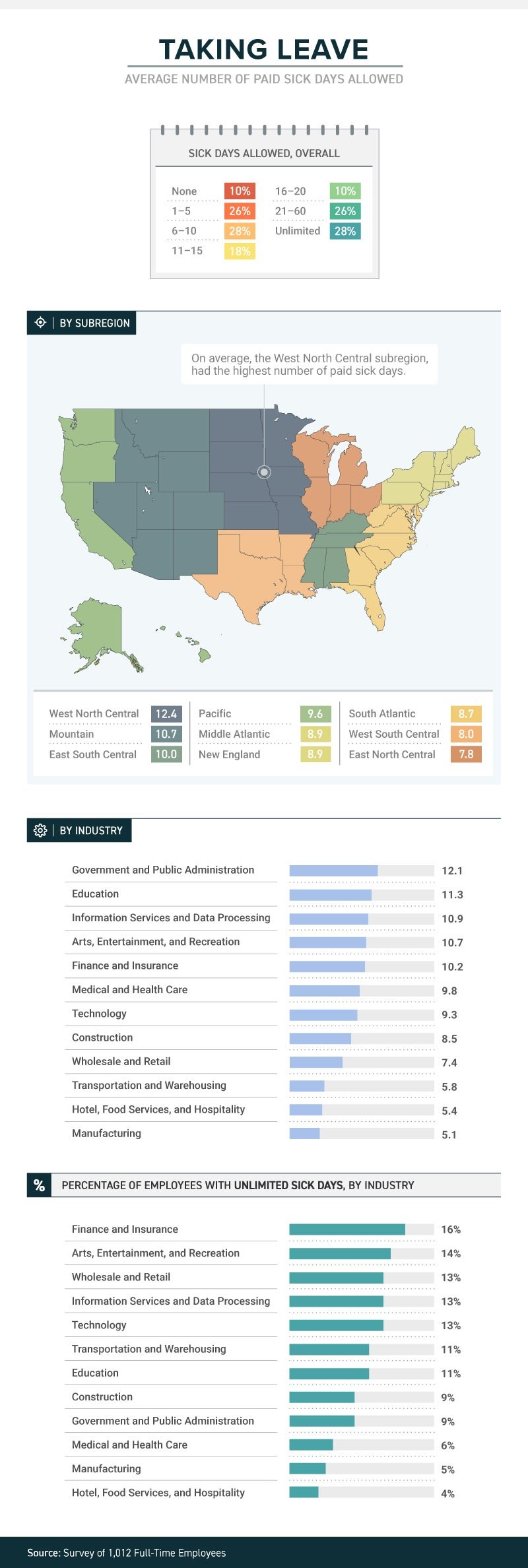Facebook Unveils New Career-Development Portal
Recently Facebook unveiled a new career-development portal that will provide accessible, relevant content to entry-level job seekers. Read this blog post to learn more.
Facebook is jumping into the learning market in a big way, announcing the launch of Learn with Facebook at its New York offices yesterday, a big step toward the social-networking giant’s recently stated goal of equipping 1 million business owners in the U.S. with digital skills by 2020.
Learn with Facebook is a career-development portal that offers introductory, free-of-charge courses in both hard and soft skills. It’s aimed at people hoping to re-enter the workforce after a period of absence as well as those wishing to acquire skills that will help them compete for entry-level jobs in the digital economy, says Fatima Saliu, Facebook’s head of policy marketing.
“We’re facing a major skills gap in this country, and Learn with Facebook is our attempt to address that,” she says. Learn with Facebook has already been launched in France and Germany, says Saliu, and will expand to other markets as well.
Learn with Facebook is a direct move into LinkedIn’s territory, although Facebook representatives denied yesterday that it was seeking to compete directly with the business-focused social network. LinkedIn has steadily built up its own learning offerings since it acquired Lynda.com in 2015 and rebranded it as LinkedIn Learning. Last week, Harvard Business Publishing announced a new partnership with LinkedIn that will allow customers of HBP to access its content directly via LinkedIn Learning’s platform.
The courses currently available on Learn with Facebook include tutorials on digital marketing as well as resume writing and job interviewing. Facebook is working with the Goodwill Community Foundation to develop course material and adapt it to the needs of local communities, says Saliu. “Our goal is to provide accessible, relevant content to entry-level job seekers,” she says.
Facebook is also enhancing its Jobs on Facebook services by allowing businesses to share their job postings on Facebook groups as well as on their own pages and newsfeeds. The company says more than 1 million people have found jobs via Facebook since it launched the service last year.
Facebook is also making updates to its Mentorship tool, which is designed to make it easier for members of Facebook groups to connect with others who have specific experience or expertise. Users will now be able to sign up to share information on what they’re offering or looking for, making it easier for other Group members to find and connect with them on their own rather than going through a Group administrator first, says Michelle Mederos, Facebook Mentorship product designer.
Facebook Groups have enabled people working in high-stress, low-prestige occupations such as certified nursing assistant obtain mentoring and support, says Seth Movsovitz, founder of a Facebook Group called CNAs Only.
Although LinkedIn currently remains the dominant social-media player in the jobs space, it’s clear that Facebook is determined to be a big player as well. For employers that are desperate to fill jobs in a tight labor market, more competition between the two can only be a good thing.
SOURCE: McIlvaine, A. (15 November 2018) "Facebook Unveils New Career-Development Portal" (Web Blog Post). Retrieved from https://hrexecutive.com/facebook-unveils-new-career-development-portal/
Helping employers start the conversation around suicide prevention
The Center for Disease Control and Prevention reported that in 2016 suicide was the tenth-leading cause of death in the U.S. Continue reading to learn how employers can start the conversation around suicide prevention.
Suicide was the tenth-leading cause of death in the United States in 2016, claiming the lives of nearly 45,000 people, according to the Centers for Disease Control and Prevention. Given recent media coverage of the high-profile suicides of Kate Spade and Anthony Bourdain, employers should be more aware of how these events have a heightened impact on people’s mental health and well-being in the workplace.
Research has shown that the likelihood of suicide in vulnerable individuals increases immediately after publicity of these types of events. This phenomenon is known as suicide contagion or the increase in suicidal behavior following media exposure. While suicide prevention is not an easy conversation to have with clients, it’s an important one. Now is the perfect time to start the conversation with your clients on how they can play a crucial role in creating awareness and supporting employees who may be experiencing suicidal thoughts.
Here’s how benefit advisers and employers can navigate the conversation:
Discuss warning signs
Sharing information about common warning signs of symptomatic behavior can give your clients a greater understanding of how they can help employees get the support they need. Often, typical warning signs can be seen in declining work performance, poor hygiene, sudden weight changes, mood swings and depression.

While discussing these common symptoms, help break down the misconception that behavioral health also can be a sign of suicidal behavior. Explain that more than half of people who die of suicide did not have a known mental health condition. Often, individuals considering suicide cite other issues, including fear that they are a burden to others, stress about finances or struggles to afford or secure a place to live. Discuss these instances with your client so they are aware of other factors that could be contributing to their employee’s situation.
Discussing these symptoms can help ensure your clients have a better understanding of how to play a role in supporting and assisting at-risk employees.
Remove the stigma of behavioral health issues
While it’s true that not all suicides are related to a behavioral health condition, the stigma surrounding these conditions still exists and can prevent many individuals from approaching their employer or seeking assistance. By talking with your clients about this stigma, you can help remove the labels and negative connotations surrounding mental health conditions in the workplace.
Share with your clients the ways in which they can develop proactive open lines of communication around behavioral health conditions. For example, explain how they can reach out to employees to build awareness of the services they offer to those struggling. By incorporating educational campaigns that promote awareness of resources, your clients can help ensure employees get the assistance they need. In doing so, your clients can foster a workplace culture of acceptance and support.
Promote available resources
As you create awareness among your clients about the role they can play in removing the stigma, it’s also important their at-risk employees are aware of the resources available to them. Regardless of what their employees may be struggling with, suicidal thoughts or another behavioral health condition, it’s important for your clients to promote resources available through their employee benefits plan. For example, you can highlight how EAPs typically provide numerous free counseling sessions.
Clients also can work with their disability carrier to address employees’ behavioral health issues. Most disability carriers can assist with integrating existing benefit offerings with other resources to help ensure clients are providing their employees with robust treatment options. Additionally, disability carriers can recommend creative solutions and accommodations to meet employees’ unique conditions and support them staying at work or returning to work sooner.
The heightened attention around suicide prevention presents you with the opportunity to discuss the importance of suicide awareness in the workplace. In doing so, your clients can better support those who may be at risk and play a crucial role in creating an inclusive and supportive environment for their workforce.
This article originally appeared in Employee Benefit Adviser.
SOURCE: Jolivet, D. (24 September 2018) "Helping employers start the conversation around suicide prevention" (Web Blog Post). Retrieved from: https://www.benefitnews.com/opinion/helping-clients-start-the-conversation-about-suicide?feed=00000152-18a4-d58e-ad5a-99fc032b0000
3 trends and 4 survival tips for managing millennials in 2019
Millennials: America's most diverse and overly stereotyped generation. Whether you like or dislike millennials, it's hard to avoid the fact that they are going to be the prime engine of the workplace for years to come. Continue reading to learn more.
anyone knows more about millennials than an actual millennial, it’s Brian Weed, CEO of Avenica. Founded in 1998, Avenica’s personnel services are focused exclusively on recent college graduates and the companies who are looking for such talent.
“Our goal is to place recent college graduates on the right career-track, finding entry-level positions for them at companies offering strong professional growth,” Weed says.
Millennials have been given “kind of a bad rap” by being overly stereotyped and studied. “Millennials are America’s most diverse generation. They hold more college degrees than any other generation, and they’ve experienced economic and political turmoil. They’re savvy, educated, skeptical, and on top of it all, they’re idealists. All of this has led to vast changes in the ways today’s workforce views business, engages with their organizations and leaders and makes decisions about their careers,” he says. And yet, just as with any generation, one must be cautious about assuming one profile fits all.
However one feels about this generation, there’s the fact that millennials are going to be the prime engine of the workplace for years to come. “The truth is that companies have to adapt to them, not the other way around,” he says.
Given the company’s focus and its tenure of service, BenefitsPRO asked Weed to identify three top millennial worker trends for 2019. Here’s his list:
1. Shifting motivations
Salary and culture continue to rank high on the list for attracting millennial and Gen Z candidates, but the following factors are increasingly important:
Flexibility: They expect more control over where and when they can work, with the ability (enough PTO and work-life balance) to travel and have other life experiences.
Mission driven: They are more in touch with the environment, society, and the future of both. They feel they are not only representative of their organization, but their organization also represent who they are as individuals and want to be a part of organizations that share similar views. They look for leaders who will make decisions that will better the world, not just their organizations, and solve the problems of the world through their work.
Development and training opportunities: Because millennials have seen such dramatic shifts in the economy, they seek to have more control over the future of their careers. Not only to “recession proof” but also to “future proof” their careers by constantly learning and developing.
2. Declining levels of loyalty and increased job hopping
These phenomena, well-known to employers or millennials, are largely due to:
Shifting motivations (outlined above): The key to managing this group is understanding the shifting motivations and finding ways to meet those needs/wants will help organizations attract and retain top talent.
Higher value placed on experiences, constantly wanting to try and learn new things: Managers need to give these employees opportunities to grow and develop in their roles is essential, but also opportunities to explore different fields and disciplines is also key. Keeping the work and the environment interesting and diverse will keep millennial employees engaged for longer.
Less patience, with a desire for frequent indicators of career progress (higher pay and/or promotions): Job hopping often allows the quickest opportunity to make more money and climb the career ladder. As a result, organizations are building in a quicker cadence for promotions and pay raises.
3. An increasing lack of basic professional skills/awareness
Many of these talented young people lack essential knowledge about what to wear, how to act and how to/engage in an office setting. Here’s how to respond:
Managers need to be ready to guide these new workforce entries into the professional skills areas. They often don’t have a network of older (parents/relatives) professionals around them to set an example and advise on what “professionalism” looks like and means. And colleges often don’t provide education in professionalism in an office setting: aside from business schools, many colleges don’t prepare students—especially those in the liberal arts—on meeting etiquette, business apps and technology, and other everyday professional practices.
Corporate onboarding of new entry-level employees often excludes the “basics” (meeting protocols, MS Office skills, etc.). While companies typically have some type of job-specific training programs, they often assume these basic office skills are there and aren’t able to see a candidate’s potential when lack of professional skills/awareness is present. This can create a barrier for highly qualified but more “green” candidates, especially first-generation graduates. Effective companies will develop training, coaching, and mentorship programs can help once on the job.
Weed’s 4 survival tips to managers of millennials
1. Create clear and fast-moving career tracks.
- Create distinct career tracks with clear direction on how to advance to each level.
- Restructure promotion and incentive programs that give smaller, more incremental promotions and salary raises, giving more consistent positive reinforcement and closer goals that make it more enticing to stay.
- Create professional development opportunities that help them advance in those career tracks and build other skills they need and want.
- Create ways young employees can explore other career tracks without leaving the company. Millennials and Gen Z’s have a higher propensity for changing their minds and/or wanting different experiences, so consider ways that enable employees to make lateral moves, or create rotational programs that allow inexperienced professionals to get experience in a variety of business capacities and are then more prepared to choose a track.
2. Alongside competitive compensation packages that include 401k matching programs and comprehensive insurance offerings, provide benefits that allow them to have a sense of flexibility when it comes to how they work.
- Working remotely, flex schedules/hours
- Floating holidays–especially beneficial as the workforce becomes more and more diverse
- Restructure PTO that gives employees more autonomy and responsibility for their work
- Tuition reimbursement programs to increase retention and build leaders internally
3. Create a strong company culture: company culture is one of the strongest recruiting and retention tools. Go beyond the flashy tactics of having an on-site game room and fun company outings and bring more focus to the company’s mission. Create and live/work by a set of core values that represents your company’s mission. People will be more engaged and move beyond just being their role or position when they feel connected to the mission.
4. Challenge without overworking. Boredom and stress are equally common as factors for driving millennials out of a workplace. Allow involvement in bigger, higher-level projects and discussions to provide meaningful learning opportunities, and create goals that stretch their capabilities but are attainable.
SOURCE: Cook, D. "3 trends and 4 survival tips for managing millennials in 2019" (Web Blog Post). Retrieved from https://www.benefitspro.com/2018/11/13/3-trends-and-4-survival-tips-for-managing-millenni/
How AI can predict the employees who are about to quit
Employers are now utilizing artificial intelligence (AI) to help predict how likely it is that an employee will stay with their company. Read this blog post to learn more.
Tim Reilly had a problem: Employees at Benchmark's senior living facilities kept quitting.
Reilly, vice president of human resources at Benchmark, a Massachusetts-based assisted living facility provider with employees throughout the Northeast, was consistently frustrated with the number of employees that were leaving their jobs. Staff turnover was climbing toward 50%, and after many approaches to improve retention, Benchmark turned to Arena, a platform that uses artificial intelligence to predict how likely it is that an employee will stay in their job.
“Our new vision is about human connection,” he says. “With a turnover rate that’s double digits, how do you really transform lives or have that major impact and human connection with people who are changing rapidly?”
Since Benchmark started using Arena, staff turnover has fallen 10%, compared to the same time last year. During the hiring process, Arena looks at third-party data, like labor market statistics, combined with applicants' resume information and an employee assessment that will give them a better sense of how long a candidate is likely to stay in a role.
“The core problem we’re solving is that individuals aren’t always great at hiring,” says Michael Rosenbaum, chairman of Arena. “Job applicants don’t always know where they’re likely to be happiest. By using the predictive power of data, we’re essentially helping to answer that question.”
Arena isn’t interested in how an employee responds to assessment questions, he says. They’re much more interested in how employees approach the questions.
“What you’re really doing is your collecting some information about how people react to stress,” Rosenbaum adds.
For example, if an employee is applying for a housekeeping role, Arena may give them a timed advanced math question to complete — something they may never use in their actual job. Arena then studies how the candidate responds to the question — analyzing key strokes and tracking how the individual tackles the challenge. The software can then get a better sense of how an applicant responds under pressure.
Overtime, Arena’s algorithm learns from the data it collects. The system tracks how long a specific employee stays at the company and can then better predict, moving forward, whether other employees with similar characteristics will stay.
“Overtime they are able to sort of refine that prediction about those that are most likely to stay, or be retained with our organization,” Reilly says. “They may also make a prediction on someone who might not last very long.”
Reilly says he’s been encouraging hiring managers at the facilities to use the data given to them by Arena to take a closer look at the candidates the platform rates as highly likely to stay in their roles. Although it’s ultimately up to the hiring manager who they select.
“Focus your time on the [candidates] that are more likely to stay with us longer,” Reilly says.
For now, Arena exclusively works with healthcare companies. The platform is currently being used by companies like Sunrise Senior Living and the Mount Sinai Health System in New York. Moving forward, Rosenbaum says, they’re hoping to get into other industries, although he would not specify which.
Rosenbaum says Arena is not only focused on improving the quality of life for employees, but also for the patients and seniors that use the facilities. The happiness of patients, he says, is closely tied to those that are caring for them.
“Is someone who is in a senior living community happy? Do they have a positive experience? It is very closely related to who’s caring for them, who’s supporting them,” he says.
This article originally appeared in Employee Benefit News.
SOURCE: Hroncich, C. (15 November 2018) "How AI can predict the employees who are about to quit" (Web Blog Post). Retrieved from: https://www.employeebenefitadviser.com/news/how-ai-can-predict-the-employees-who-are-about-to-quit?brief=00000152-1443-d1cc-a5fa-7cfba3c60000
Are Your Workers Sleeping on the Job?
A recent survey by Accountemps revealed that approximately three-quarters of American adults surveyed reported feeling tired at work often. Consistent tiredness can be a big risk for companies even if employees aren’t actually falling asleep on the job. Continue reading to learn more.
The occasional Monday-morning yawn is a common sight at most offices—but, according to new research, a staggering number of employees report being tired at work. Even if workers aren’t actually sleeping on the job, consistent tiredness could spell big trouble for productivity and retention.
Staffing firm Accountemps surveyed 2,800 American adults working in office environments, finding that nearly three-quarters report being tired at work often (specifically, 31 percent said very often, and 43 perfect reported feeling tired somewhat often). Twenty-four percent said it’s not very often that they’re yawning on the job, while just 2 percent said they never feel tired at work.
The report also ranked the top 15 “sleepiest” cities based on survey responses, with Nashville, Tenn. claiming the No. 1 spot, followed by a three-way tie between Denver, Indianapolis and Austin, Texas.
Michael Steinitz, executive director of Accountemps, noted that on-the-job errors would naturally follow if you have a workforce of tired employees. And, he says, “Consider the underlying causes of why employees are sleepy: If it’s because they’re stretched too thin, retention issues could soon follow.”
Those ideas are bolstered by research from Hult International Business School, which found that the 1,000 workers in its study average about 6.5 hours of sleep per night, lower than the seven to eight hours recommended by the American Academy of Sleep Medicine. Even a half-hour less than the optimal sleep time, researchers found, led to poorer workplace performance. Tired workers reported a lack of focus, needing more time to complete tasks, struggling with creativity, lacking motivation to learn and challenges to multitasking. Many of those side effects of being tired at work, the researchers wrote, are often mistakenly attributed to poor training or work culture when, in reality, they may stem from sleeplessness.
Lack of sleep has a well-documented impact on physical health, and Hult also noted its effects on mental wellness. A vast majority of respondents (84 percent) said they feel irritable at work when they’re tired, and more than half reported feelings of frustration and stress—all of which, researchers noted, can impact teamwork and collaboration.
Accountemps suggested a number of ways employees can guard against being tired at work: physical exercise, being more communicative with managers and leaving work at the office, such as by not bringing a phone or laptop to bed to decrease the chances of letting work communications keep them up at night. On the employer side, the firm recommended managers set reasonable office hours, increase face-to-face meetings with subordinates to see where support is needed and encourage workers to unplug when they leave the office.
SOURCE: Colletta, J. (26 October 2018) "Are Your Workers Sleeping on the Job?" (Web Blog Post). Retrieved from https://hrexecutive.com/are-your-workers-sleeping-on-the-job/
Addressing Long-Term Care Concerns
When insurance plan conversations lead to discussions about after retirement, there are certain hot-button issues that will swing employee conversations out of your control. When helping older employees with retirement and beyond, two topics will change the atmosphere in the room. One is the long-term viability of Social Security, which frequently comes up as a question. The second is on the conversation of long-term care, which has the possibility to make or break a retirement plan. In this installment of CenterStage, Donald McClurg, one of our financial advisors, breaks down what matters and offers answers to many of the questions concerning long-term health.

What Exactly is Long-Term Care? What’s Gobbling up Your Retirement?
You place insurance on the things that are valuable to you, such as your car, your home and possibly your pet. What about your life? Is your family of importance to you, and beyond that, what about your legacy (i.e. any funds left over from your lifetime given into your living family members)? Currently, there’s about a 50% chance a 65-year-old will require care such as an in-home nurse or a medical/assisted living facility that can deliver optimal, specialized care. For employees near retirement or the 65 years-old mark, there is a trove of questions surrounding long-term care, including:
- Should I consider a hybrid long-term care plan?
- Is the insurance worth it for me, given how insurers have been increasing the price of premiums?
- How do I avoid a government facility should I need care?
- How much money should be saved and when should saving begin?
- Can I afford this/Will I make it?
- What are my blind spots?
Unfortunately, the “right” answer to these vexing questions regarding long-term healthcare is exclusively individual-specific. Factors in the determination are dependent upon the individual’s wealth, age, desire to leave a bequest and a need for peace of mind, amongst all other factors. Donald believes, “The biggest risk to a financial plan is not running out of money, it is incurring a financial catastrophe later in life and not having protection. Right now, that catastrophe has the highest probability of showing up in the form of long-term care.”
Commonly viewed as less superior to other insurance options already being taken out of a paycheck, the fact of the matter is this is not another out-of-pocket expense placed on you, such as renters or car insurance. Rather, long-term care should be seen as a valuable choice; an investment in your future and for your family. As a “numbers guy”, Donald brings up the importance of three variables in particular: 70, 90, and 5, which mean:
- Singles 65 and older stand a 70% chance of needing long-term coverage
- Couples 65 and older stand a 90% chance of needing long-term care
- Only 5% of Americans have long-term coverage plans
The Driving Factor for Long-Term Care
Individuals display an adversity to paying for long-term coverage, as they are worried about the chance of paying for it and not needing it or having to leave their homes and live out their lives in a facility. If that’s you, you may consider a hybrid plan. Most hybrids solve the two main deterrents of long-term care insurance by:
- Allowing for in-home care (that’s right, they don’t force you into a facility)
- Return of unused premiums. (i.e. whatever portion you don’t use is returned to your beneficiary)
According to the U.S. Department of Health and Human Services, the average cost for a semi-private room in a nursing home is $6,844 per month, with the average stay being around 2.5 years. As previously listed, 52.3% is the expected percentage of people turning 65 who will have to have a long-term care need during their lives. That is over half the population of individuals turning 65 years of age who will need the assistance offered through long-term care.
The most misleading stat is that 63% of people spend $0 on long-term care. This is because roughly half of Americans have exactly $0 in savings or will have $0 when/if they need long-term care. Those individuals typically find themselves at facilities who accept Medicaid, meaning they are more than likely falling short of the care they need. Here’s the most under reported and most impactful fact of long-term care: the burden is falling on your employees. In total, an estimated $3 trillion in lifetime wages is lost due to unpaid care-giving responsibilities.
How Can Employers Offer Better Long-Term Care Solutions?
It has been said that happy employees are productive employees, and as an employer, you naturally want to increase both the productivity and well-being of employees. Of the many things your employees stress about (home, kids, work, etc.), money is always at the top of the list. In fact, a study investigating employee productivity and well-being found that employees spend 3-4 hours per week, 4-5 times per hour worried about finances. At Saxon, we are happy to help employers implement useful financial tools for their employees to leverage.
For the majority of the working world, healthcare derives from employers, thus, the head of the organization is the one responsible for properly educating employees on their coverage. As the saying goes, “proper planning prevents poor procedure.” With Saxon, employers can schedule a brief, in-house seminar with one of our stellar financial advisors and a long-term care specialist. Through these seminars, clients and employees will discover clear solutions to anything that may still have them on the fence about investing in long-term health. Employees will come to learn the real value in long-term care, such as the reason behind asset location mattering more than asset allocation.
Ready to explore your options and become one of the 0.5% of businesses currently offering long-term care insurance to their employees? If so, don’t hesitate; pick up the phone and call Donald with Saxon Financial today at (513) 609-4404 or toll-free at (800) 847-1733 to discover how you can avoid the single largest threat to your employees’ retirement.
Why Saxon Is the Right Choice for You
At Saxon, we care about you – your family, your company, your finances, and your future. We cultivate our years of practice and experience to deliver exceptional service to you every time. We empower you by placing the tools and knowledge necessary into your hands to deliver remarkable returns on investment. An engagement with Saxon is unique. This is because we have invested in developing a culture where business is personal. Our clients are the central heart of our organization; meaning that without you we have no purpose.
To Saxon, experience matters. We know that outcome is crucial, but to us, it matters how we get there. By taking intentional action in an authentic manner, we are a catalyst for your success that is positively refreshing. We invite you to explore the Saxon way.
Culture is key to attracting younger talent, but you can make it mutually beneficial
According to an article in Harvard Business Review, six in ten millennials are ready to change jobs at any moment, creating a great opportunity for recruitment. Read this blog post to learn how organizations can attract younger talent.
Millennials with jobs are more likely to be looking for a new job than any other generation in the workplace, according to a Harvard Business Review article by Brandon Rigoni and Amy Adkins. They report that six in ten millennials are ready to jump ship at any given time.
This is a challenge for keeping workers, but it’s also a golden opportunity for recruitment. For the most part, these are bright workers who are deconstructing the great American job search.
Firms can seize this opportunity by honing their HR brand to appeal to younger generations and balancing this with assessments that assure a good match with most new hires.
Compensation is still important, but millennials are looking for jobs that are in sync with their values and can help define who they are. Getting hired has become a matter of personal identity.
As an employer, you are being evaluated more than the candidates. How will your firm make the cut? And if you do, will you hire the right people?
Major corporations have overhauled their approach in the scramble for talent.
- General Mills began using virtual reality headsets to allow candidates to see themselves working inside General Mills, including using the company’s gym.
- Two Volvo engineers recently built a Baja racer for collegiate competitions to attract young engineers to the legacy truck builder.
- General Electric’s humorous “What’s the Matter with Owen” television campaign said bupkis about GE products. Instead, Owen touted the company’s geek chic HR brand as a bespectacled new employee being effusive about his job of programming life-changing technology to help people.
- McDonald’s eschews traditional media to engage 16 to 24-year-old candidates via Snapchat, offering “Snaplications” and video clips of young McDonald’s employees talking about their jobs.
Not everyone can serve up cold brew coffee in a corporate cafeteria. Still, there are practical steps most firms can take to enhance their HR brand for millennial and Gen Z values.
Does your organization operate with a high degree of transparency? Is it socially responsible? Do employees have paid leave for volunteer work? Are young team members valued and encouraged to contribute to relevant and visible projects and products?
Are there ways to present your products and services to be more relevant and important to society? For example, a textile manufacturer might not actually make exciting products anyone can buy, but its fabrics are used in the space program or to save lives in emergency rooms. Maybe a law firm has a pro bono clinic for low-income families.
Yes. HR needs to make your employer brand attractive to these talented but fickle job seekers, but this doesn’t mean that everyone who’s attracted to your organizational hipness is going to be cool for your company.
There are two tools to make sure both parties get what they want. The first is assessments.
Talent acquisition assessments greatly improve your odds of hiring an individual who is well matched to your company’s needs. The best are scientifically valid and EEOC compliant, focusing on the candidate’s motivation and likely work traits as compared to the job description. You’ll save a lot of money in not having to re-hire for a position.
The second tool is the “Shared Success Model,” which is a process hiring managers can establish that aligns individual development plans with organizational strategies to identify where overlap exists and where there may be gaps.
It has five components:
- Individual needs—What is important to the candidate, both professionally and personally? What aligns with their values and interests?
- Individual offer—What value does the organization bring to the candidate?
- Company needs—What does your organization require for success now and in the future? What do you need from your leaders and employees?
- Company offer—What is your corporate value proposition to the candidate? What opportunities do you provide? What culture do you provide?
- Plan—Analyze the gaps and overlap between each quadrant. Develop and implement a plan that balances your grid for shared success.
As younger candidates seek more of a cultural match, the Shared Success Model is a good way to make sure the culture you promise is a culture that supports your mission and business model.
SOURCE: Warrick, D. (8 October 2018) "Culture is key to attracting younger talent, but you can make it mutually beneficial" (Web Blog Post). Retrieved from https://www.benefitspro.com/2018/10/08/culture-is-key-to-attracting-younger-talent-but-yo/
What employers can do to combat risks of workplace opioid abuse
How can employers combat the risks associated with workplace opioid abuse? With an increase in opioid use, employers are now tasked with the challenge of addressing opioid misuse in the workplace. Continue reading to learn more.
The opioid epidemic presents a unique challenge for employers. While opioids can be beneficial for employees suffering from pain, they also pose grave risks and dangers for companies as even appropriate use of the drugs can cause impairment and lead to accidents.
For example, if an employee had an accident and suffers an injury, you may see the physical signs of the injury. However, it’s not as obvious if the employee was prescribed opioids for the pain associated with that injury. If the employee doesn’t disclose the prescription, they could resume their everyday duties, like operating machinery, when they should be restricted while using the drug.
Due to the increasing prevalence of opioid use, employers are likely now challenged with addressing misuse in the workplace. Often, companies may not know the best approach to supporting employees dealing with an opioid addiction. When speaking with employers, it’s important to stress the need for organizations to be well-versed in opioid misuse and ways to proactively identify and address it.
Employers can work to combat opioid use in their organization by providing accommodations and updating their policies, procedures and employee communications. Here are a few ways they can get started.
Short-term accommodations
If an employee is taking prescribed opioids for an injury and has specific limitations or restrictions, an employer can work with a disability carrier to determine potential short-term accommodations that can be made to meet the employee’s needs. Short-term accommodations can help keep an employee comfortable and productive at work during his or her recovery.
Policies and procedures
If an employer hasn’t done so already, it should consider putting a comprehensive drug policy in place to help it address issues that may arise if an employee misuses prescription drugs. The policy should include a description of available assistance options for employees who are struggling with substance abuse and clearly state consequences for employees who violate the policy, empowering supervisors to take appropriate action in response to employee issues.
Destigmatizing use
It’s easier to help someone if they come forward, but right now, stigma surrounding opioids can cause employees to keep their prescription use to themselves. Encouraging open lines of communication can help companies destigmatize prescription drug use so their employees feel comfortable disclosing the medications they’re taking that could limit them at work.
Fostering transparency, combined with short-term accommodations and clear policies, can help employees feel more comfortable coming forward with their condition. Remind employers that their disability carrier can be a great resource to help with education, recommend proactive ways to address misuse at their organization and create accommodation plans for employees in need. With these steps, employers can help support their employees and, ultimately, make the workplace a safer place for all.
SOURCE: Jolivet, D (16 October 2018) "What employers can do to combat risks of workplace opioid abuse" (Web Blog Post). Retrieved from https://www.benefitnews.com/opinion/what-employers-can-do-to-combat-workplace-opioid-abuse-risk
Ready for the sounds of office sniffles?
A recent study by law firm, Farah and Farah, states that one in four full-time workers receive between 1 and 5 sick days. Continue reading to learn more.
It’s not just a matter of whether they feel well enough to work, or whether they have sick days. The boss’s attitude about whether workers should take sick days or not can determine whether they actually do stay home when they’re sick, or instead come to work to spread their germs to all and sundry.
A new study from law firm Farah & Farah finds that even though it can take a person some 10 days to fully recover from a cold, approximately 10 percent of full-time workers in the U.S. get no sick days at all (part-timers don’t usually get them either), while more than 1 in 4 have to make do with between 1 and 5 sick days. Just 18 percent get enough sick time to actually recover from that cold—between 11 and 15 days.
The amount (or presence) of sick time varies from industry to industry, with government and public administration providing the most (an average of 12.1) and both hotel, food services and hospitality and manufacturing providing the least (an average of 5.4 for the hospitality industry and 5.1 for manufacturing). Some lucky souls actually get unlimited sick days, although even then they don’t always use them.
Regardless of industry, or quantity, just because workers get sick days it doesn’t mean they use them. Workers often worry that they’ll be discouraged from using them, with employers who may provide them but not encourage employees to stay home when ill. In fact, 38 percent of workers show up to work whether they’re contagious or not. Sadly for the people they encounter at work, the most likely to do so are in hospitality, medical and healthcare and transportation. Plenty of germ-spreading to be done in those professions!
And their employers’ attitudes play a role in how satisfied they are with their jobs. Among those who work for the 34 percent of bosses who encourage sick employees to stay home, 43 percent said they’re satisfied with their jobs in general. Among those who work for the 47 percent of bosses who are neutral about the use of sick days, that drops to 21 percent—and among the unfortunate workers who work for the 19 percent of bosses who actually discourage workers from staying home while ill, just 12 percent were satisfied with their jobs.
When it comes to mental health days (no, not that kind; the ones people really need to deal with diagnosed mental health conditions), fewer than 1 in 10 men and women were willing to call in sick. Taking “mental health days” when physically healthy, however, either to play hooky or simply have a vacation from the office, is something that 15 percent of respondents admitted to.
SOURCE: Satter, M (5 October 2018) "Ready for the sounds of office sniffles?" (Web Blog Post). Retrieved from https://www.benefitspro.com/2018/10/05/ready-for-the-sounds-of-office-sniffles/
Original report retrieved from https://farahandfarah.com/studies/sick-days-in-america
U.S. Unemployment Drops to Lowest Rate in 50 Years
Last month the U.S. unemployment rate fell to 3.7 percent, the lowest it’s been in 50 years. Continue reading to learn how the low jobless rate is affecting the U.S. labor market.
Unemployment in the U.S. fell to 3.7 percent in September—the lowest since 1969, according to the Bureau of Labor Statistics (BLS).
The low jobless rate, down from 3.9 percent in August, is further evidence of a strong economy—employers added 134,000 new jobs in September, extending the longest continuous jobs expansion on record at 96 months. The continued gains run counter to economists' expectations for a significant slowdown in hiring as the labor market tightens. Through the first nine months of the year, employers added an average of 211,000 workers to payrolls each month, well outpacing 2017's average monthly growth of 182,000.
"This morning's jobs report marked a new milestone for the U.S. economy," said Andrew Chamberlain, chief economist at Glassdoor. "With good news in most economic indicators today, it's likely the economy will continue its march forward through the remainder of 2018."
Cathy Barrera, chief economist at online employment marketplace ZipRecruiter, pointed out that the jobless rate ticked down for all education levels. "Anecdotal evidence has suggested that employers have experienced labor shortages for entry-level positions, and the decline in unemployment for these groups reflects that," she said. "More of those joining or rejoining the labor force are moving directly into jobs, reflecting the high demand for workers."
The sectors showing the strongest jobs gains in September include:
- Professional and business services (54,000 new jobs).
- Healthcare (26,000).
- Transportation and warehousing (24,000).
- Construction (23,000).
- Manufacturing (18,000).
"Retail job losses—20,000 jobs—were widespread, and the leisure and hospitality sector lost 17,000 jobs, largely confined to restaurants," said Josh Wright, chief economist for recruitment software firm iCIMS, based in Holmdel, N.J.
"We can clearly point to a slowdown in retail trade for the dip in [overall] payroll numbers in September," said Martha Gimbel, research director for Indeed's Hiring Lab, the labor market research arm of the global job search engine. "Retail trade had a strong first half of the year but has slowed down in recent months. In addition, recent Hiring Lab research saw a slight dip in the number of holiday retail postings, suggesting that the sector may struggle in months to come."
Prior to September, employment in leisure and hospitality had been on a modest upward trend and the losses last month may reflect the impact of Hurricane Florence.
The Department of Labor said it's possible that employment in some industries was affected by Hurricane Florence which struck the Carolinas in September. Nearly 300,000 workers nationwide told the BLS that bad weather kept them away from their jobs last month.
"That's far below the level in September 2017 amid hurricanes Harvey and Irma, but significantly above the average of about 200,000 over the prior 13 years," Wright said. Upward revisions are likely, he added.
Wages Stubborn but Rising
In September, average hourly earnings for private-sector workers rose 8 cents to $27.24. Over the year, average hourly earnings have increased by 73 cents, or 2.8 percent.
"That's down slightly from the 2.9 percent pace last month, but consistent with a steady upward trend in wage growth we've seen as the job market tightens and more employers face labor shortages," Chamberlain said. "We expect to see that pace continue to rise throughout the holiday season, likely topping 3 percent within the next six months."
Glassdoor has recorded strong wage growth in tech-heavy metropolitan areas such as San Francisco, New York and Los Angeles.
"If the true wage growth rate is at or below 2.8 percent year-over-year, it is disappointing that it is not growing faster," Barrera said. "Given how tight the labor market has been not only with overall unemployment below 4 percent, but particularly so at the entry level, we would expect wage growth to be higher. The labor turnover numbers suggest that mobility is lower than it historically has been in periods where unemployment is very low. This is one reason wages may not be rising as quickly as we'd expect."
Labor Force Participation Stalled?
The nation's labor force participation rate held at 62.7 percent.
"Looking at the labor flows data, the rate of movement of the civilian population into the labor force hasn't moved much in the last couple of years, however, more of those folks are moving directly into employment rather than into unemployment," Barrera said.
Wright noted that the number of new labor force entrants and reentrants going directly to unemployment was just 33,000. "This raises interesting questions—whenever we get a recession, how long will these reentrants and new entrants continue searching for jobs before leaving the labor force?" he asked.
The percentage of the population in their prime working years with a job also held around 79 percent, where it's been for about eight months, Gimbel said, adding that the measure suggests that the number of workers remaining to pull into the labor force may be exhausted.
"The share of the labor force working part-time but who wants a full-time job unfortunately ticked up," she said. "Any remaining slack in the economy may be concentrated in part-time workers who want more hours."
SOURCE: Maurer, R. (5 October 2018) "U.S. Unemployment Drops to Lowest Rate in 50 Years" (Web Blog Post). Retrieved from https://www.shrm.org/resourcesandtools/hr-topics/talent-acquisition/pages/us-unemployment-drops-lowest-50-years-bls-jobs.aspx/











